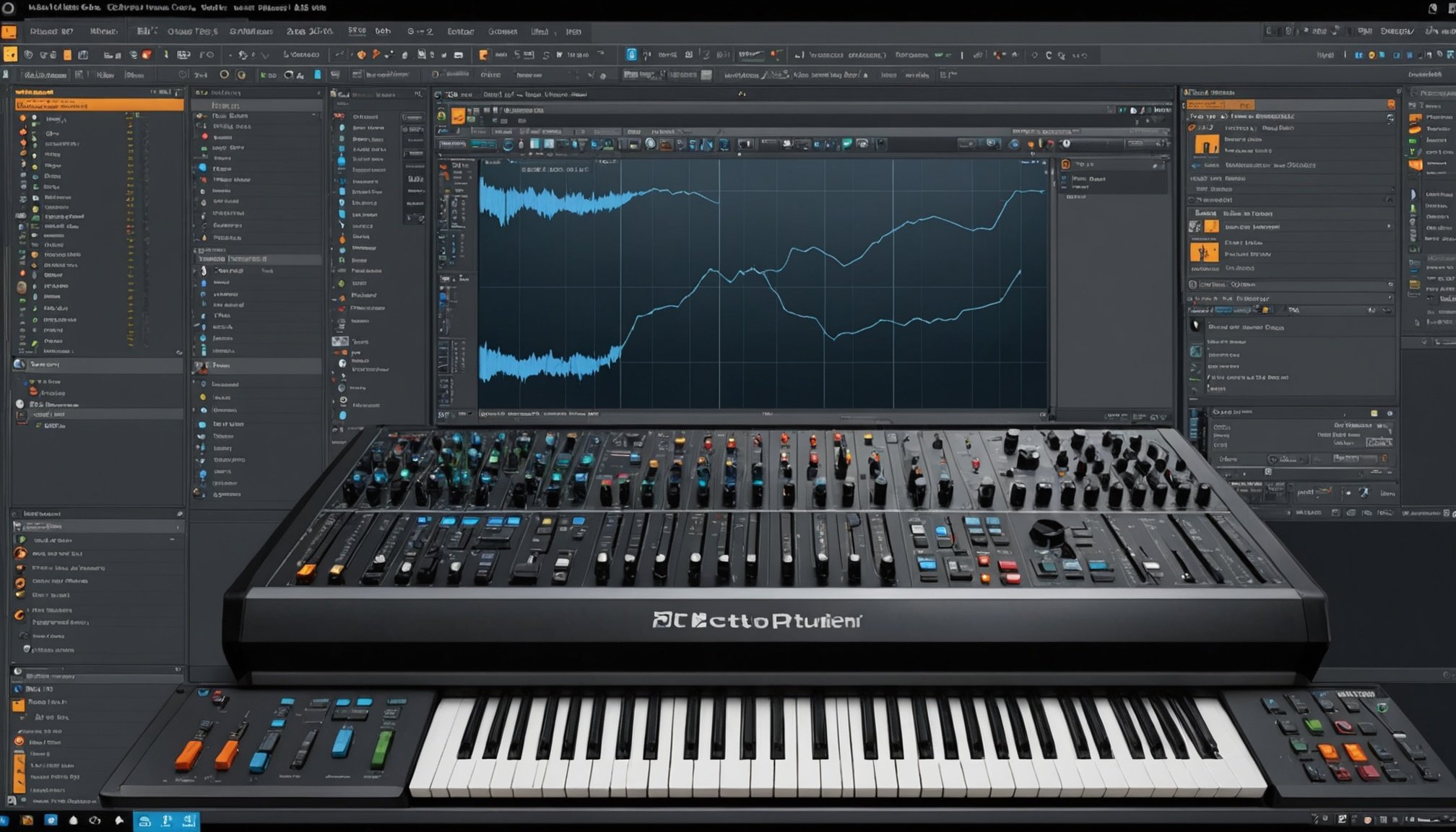Importance of a Custom PC for Music Production
When it comes to music production, the hardware you choose can significantly impact your efficiency and creativity. A custom PC for music production is tailored to the unique needs of musicians, enhancing both FL Studio optimization and overall audio processing performance.
Custom PCs offer the flexibility to select components specific to music software requirements. Unlike pre-built systems, custom builds allow you to focus on crucial elements, such as high-performing CPUs and ample RAM, ensuring smoother multitasking and handling of complex projects. Custom PCs can be designed to optimize cooling systems, further enhancing stability during intense audio processing tasks.
This might interest you : Optimize your lenovo legion 5 for effortless twitch streaming using obs studio: a complete guide
In the realm of FL Studio, optimizing your setup with a custom PC can lead to marked improvements. Hardware choices, such as faster SSDs for reduced load times and dedicated audio interfaces, contribute to a seamless workflow. This optimization is essential for producers who rely heavily on plugins and multiple tracks.
Comparatively, pre-built systems may not offer the same level of customization, potentially leading to bottlenecks in audio production processes. By investing in a custom PC, you can meet the demanding requirements of modern music production, achieving higher efficiency in tasks and exploring creative possibilities without limitations.
In the same genre : Essential tactics for protecting your synology ds920+ nas data integrity during power interruptions
Essential Components for Your Custom PC
When you’re building a custom PC for music production, selecting the right components is crucial. The core components determine not only the speed but also the efficiency of your production process, especially when using software like FL Studio.
Selecting the Right CPU
A powerful CPU for FL Studio can significantly enhance your music creation process. Prioritise processors with multiple cores and threads, such as the Intel i7 or AMD Ryzen 7 series. These CPUs handle multiple plug-ins and tracks simultaneously, avoiding lags while mixing and rendering audio tracks. Consider the clock speed too, as a higher frequency ensures smooth real-time processing and will impact the overall seamlessness of your workflow.
Choosing Optimal RAM
RAM requirements form the backbone of a smooth music production experience. A minimum of 16GB of RAM is advisable, although 32GB can provide extra headroom for intricate compositions. Focus on a higher RAM speed (e.g., 3200 MHz) to enhance load times and performance when running multiple applications. This allocation ensures that your projects run efficiently without stuttering, even with complex arrangements.
Storage Solutions for Music Projects
The debate of SSD vs HDD is vital in music production. SSD (Solid State Drives) are preferred for their faster read/write speeds, critically improving the time it takes to load large audio files and open projects. While HDD (Hard Disk Drives) can be used for backup, SSDs should be used for project storage to ensure optimal production speed and reliability.
Assembly Instructions for Your Custom Build
Building a custom PC for music production requires meticulous attention to detail. Begin with assembling your PC by preparing all necessary components. This includes the motherboard, processor, RAM, storage devices, GPU, and power supply. Ensure that all components are compatible before starting the assembly process.
Start with the motherboard—position and secure it in the case using standoffs. Next, slot in the CPU, followed by installing the CPU cooler, applying thermal paste if required. Afterwards, insert the RAM sticks into the corresponding slots.
When it comes to storage, connect SSDs or HDDs to the appropriate ports on the motherboard. Ensure proper alignment and secure them to the case. For the GPU, fit it into the designated PCIe slot, fastening it securely with screws.
Optimal cable management is crucial for good airflow. Use cable ties to organize cabling, making sure wires don’t obstruct air paths or cooling fans. This step ensures the system remains cool during demanding tasks, preventing overheating.
Lastly, double-check all connections and confirm the compatibility of your hardware setup. Before powering on, closely inspect each connection point. This guarantees your PC runs efficiently, providing the reliable performance needed for intricate music production projects.
Software Compatibility and Optimization
Navigating the world of audio software optimization can be a compliment to your music production journey. Establishing a well-functioning setup with FL Studio compatibility is crucial for a smooth workflow. Optimizing your system involves understanding compatible software and operating systems, as well as staying on top of maintenance tasks like driver updates.
Choosing Compatible Operating Systems
Selecting the right operating system is vital for seamless FL Studio compatibility. Some OS options offer more robust support and allow audio software to run more efficiently. Windows and macOS tend to be the primary choices for most producers due to their extensive compatibility and support.
Essential Software Tools
Optimizing your music production setup isn’t just about hardware; software plays a pivotal role, too. Essential tools like DAWs, virtual instruments, and effect plugins are crucial. These tools enhance workflow by providing a seamless production experience. Ensure that your chosen software integrates well with FL Studio for the best results.
Driver Installation and Maintenance
For optimal audio performance, ensure your drivers for music production are up-to-date. Outdated drivers can result in latency issues or crashes, disrupting your creative flow. Regular updates and checks will maintain reliable audio processing, keeping your production on track.
By focusing on these areas, you can achieve a flawlessly optimized setup for FL Studio, enhancing both productivity and creative expression.
Performance Enhancement Tips
When it comes to optimizing FL Studio performance, every detail counts. The goal is to achieve seamless audio production by minimizing latency while maximizing audio output. A primary factor influencing performance is the quality of your audio interface and sound card. Investing in high-quality hardware can dramatically reduce latency, ensuring your workflow is smooth.
Minimizing latency can also be addressed through simple yet effective audio production tips. Start by adjusting the buffer size and sample rate settings; lower buffer sizes reduce delay but may strain your CPU. Ensure that your drivers are updated frequently to further enhance performance.
Regular system maintenance is crucial for smooth operation. Keep your PC clutter-free by removing unnecessary files and applications, which can otherwise slow down processing. Regularly defragment your hard drive and optimize RAM usage. You should also consider using an SSD for quicker read/write speeds, significantly improving FL Studio performance.
Remember the importance of balancing system resources. By following these simple audio production tips, you’ll reduce latency and enhance your overall production quality. Through optimizing your setup both hardware-wise and software-wise, your audio output will achieve new heights.
Budget Considerations and Common Pitfalls
Understanding the financial landscape is crucial when embarking on the journey of building a custom PC for music production. Defining your budget with precision ensures that you make the most out of your investment without unnecessary compromises.
Establishing Your Budget
Start by evaluating the specific demands of your music production projects. Are you primarily working with audio recordings, or do your projects involve heavy sampling and virtual instrument use? These factors will dictate the kind of components you’ll need. For basic setups, around £800 might suffice, while professional needs could push the budget upwards of £2000. Being aware of your expenses can streamline the decision-making process, ensuring that each purchase contributes to your overall capability.
Cost-effective Component Choices
Selecting budget-friendly components doesn’t mean skimping on power or functionality. For a reliable setup, focus on components like solid-state drives for faster data retrieval and ample RAM, ideally around 16GB or more, to handle demanding software. Additionally, consider newer budget processors which often provide excellent value for money.
Common Mistakes in Custom Builds
One common pitfall is neglecting the power supply unit (PSU). An inadequate PSU can lead to system instability. Another frequent custom build error is overlooking cooling solutions, which are vital in preventing hardware from overheating. Ensure compatibility of all parts to sidestep unnecessary delays or mistakes during setup.











